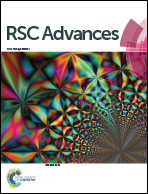Challenges and developments of self-assembled monolayers and polymer brushes as a green lubrication solution for tribological applications
Abstract
Self-assembled monolayers (SAMs), after originally being investigated due to their functions in changing surface wettability, have been significantly developed over the years. Many types of SAMs have been developed on a variety of substrates. However their formation mechanism, rate and quality are found to be influenced by many factors. A range of SAMs including single- and multi-component are included in this review with focus on the nano and macro tribological properties. More recently, surface initiated polymer brushes, i.e. macromolecular assemblies attached to a substrate, have emerged to be an alternative and promising method for surface modification. The ability to tether these macromolecules to tribological contacts is key to their resistance to shear under loaded contacts. This review also covers atom transfer radical polymerisation (ATRP) and the role of this technique in developing new lubrication solutions. Particular care has been taken to include the development of lubrication solutions for silicon nitride due to the importance of this material as an engineering ceramic. This paper reviews the state-of-the-art development of SAMs and polymer brushes especially the potential opportunities and challenges in applying them in tribological contacts as a lubrication solution.


 Please wait while we load your content...
Please wait while we load your content...